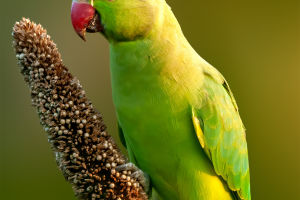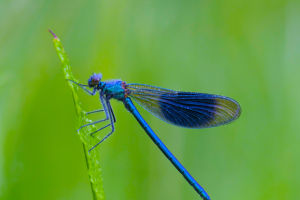Many magical species have been born in the long history of bird evolution. In the New World America, there lives such a particular type of bird.
They gave up dancing wildly in the sky and kept company with bees and butterflies hanging among flowers all day long, hovering to collect nectar and transfer pollen. Because its living habits and flying methods are so similar to those of bees, we vividly call them hummingbirds.
Hummingbirds belong to the family Swiftidae, but some zoologists classify them as a separate order of hummingbirds, divided into about 113 genera and 366 species. Modern hummingbirds are mainly distributed in Central and South America, with a few species distributed in North America.
Their habitats are diverse, whether it is arid deserts, dense tropical rainforests, or even the plateaus of the Andes. Different species of hummingbirds are distributed. It can reach as far north as Alaska and south as Tierra del Fuego.
Hummingbirds are tiny in size. When flying, their wings flap rapidly to create a jewel-like phantom; the frequency of wing beats during flight can reach 50 times per second; the beak is long and thin, straight or curved, with significant variation; the wings are long and Narrow; feet small and weak.
Most hummingbirds rely on their superb hovering, precise forward flight skills, and their long beaks to feed, sucking the calorie-rich nectar from flowers as they deplete themselves every hour of nectar-feeding. Fat causes weight loss, so you need to eat multiple times within 12 hours a day.
To support hovering to suck honey, the evolving hummingbirds have made a series of "magic modifications" to their bodies, all of which have exceeded the physiological limits of birds.
The first is simplifying the wing structure, with many less essential parts cut off. The entire wing looks like a stiff propeller blade, short and compact.
The flexibility of the shoulder joints has been dramatically improved, and the range of wing movement has reached extreme positions, allowing the wings to flap at high speeds in an "8"-shaped trajectory.
Like a powerful super engine, the chest muscles that drive the wings are highly developed.
Scientists estimate that the weight of this chest muscle exceeds 30% of the body weight and can reach up to 40%.
To adapt to the high-speed flapping of their wings, hummingbirds have the fastest metabolism among all animals. Their blood circulation is rapid, and their oxygen requirements are considerable. Behind all this is a powerful heart. Their hearts beat 20 times per second, ten times more than humans. They can be called the fighters of the bird world.
Such a unique body structure allows hummingbirds to acquire superb flying skills. In addition to hovering, they can change directions at will during flight and even fly backward, making them unique in the bird world.


